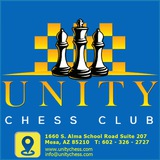📘 By playing 32...Nd2-/+, black missed a winning chance!
32...Bf6! 33.Bxf6 (33.Qe1 Qxe1 34.Bxe1 Nxb2-+) 33...Nd2 0-1
32...Bf6! 33.Bxf6 (33.Qe1 Qxe1 34.Bxe1 Nxb2-+) 33...Nd2 0-1
📘 Meier allowed Svidler's king to penetrate to e6 by playing 46...Bd4? 47.Kf5!
Instead he should have played 46...Rd6! with some drawing chances for black.
Instead he should have played 46...Rd6! with some drawing chances for black.
📘 5...f5 6.exf5 Nh6 was introduced by British late Grandmaster, Anthony Miles, who used to employ rare lines. Morozevich, Timman, and Gulko are among top players who have followed Miles' footsteps in this line.
📘 25.Rd7??
A strange blunder by the British super GM. It seems that Adams has just considered 25...fe4?.
25...Qf4-+
White could close lines for black's rooks and queen by playing 25.e5!
A strange blunder by the British super GM. It seems that Adams has just considered 25...fe4?.
25...Qf4-+
White could close lines for black's rooks and queen by playing 25.e5!
📘 According to the German magazine, Schach, Keymer is the greatest German talent since Lasker! Yet, he missed an easy draw in this game.
54.Ra5?
(55.Rxa7?? f6-+;
54.Kf5 with the idea of Rxa7 was an easy draw.)
54...Kc4 55.Kf6 a6!
It seems that white had missed a6 in his initial calculation.
56. Kg5 Rg7! and black is playing for a win in a position that was a dead draw few moves ago!
54.Ra5?
(55.Rxa7?? f6-+;
54.Kf5 with the idea of Rxa7 was an easy draw.)
54...Kc4 55.Kf6 a6!
It seems that white had missed a6 in his initial calculation.
56. Kg5 Rg7! and black is playing for a win in a position that was a dead draw few moves ago!
📘11.Qg3
This move seems to be an improvement by Naiditsch on 11.e5, which was tried by him in the previous year.
This move seems to be an improvement by Naiditsch on 11.e5, which was tried by him in the previous year.
📘 White's position is preferable due to spatial advantage. White can increase his advantage by transfering the knight to c5 outpost by 52.Na1!
📕 #85
37...f5? will be refuted by 38.d4, while 37...Ne6 is a normal move but not the best.
Although 37...Be6! may not seem correct at first sight to some players it is the best! Why is exchanging the opponent's bad bishop the strongest move?
The point is that when we exchange pieces we should not compare the exchanged pieces but compare the position before and after the exchange.
In this position, after Bc4 leaves the board, d3 and b4 become seriously weakened.
A classical instructive example of transposition of advantages.
37...f5? will be refuted by 38.d4, while 37...Ne6 is a normal move but not the best.
Although 37...Be6! may not seem correct at first sight to some players it is the best! Why is exchanging the opponent's bad bishop the strongest move?
The point is that when we exchange pieces we should not compare the exchanged pieces but compare the position before and after the exchange.
In this position, after Bc4 leaves the board, d3 and b4 become seriously weakened.
A classical instructive example of transposition of advantages.
📕 20...a3! 21.b3 Na6!
Now, black knight settles on b4 square to attck a2 and control d5. The strong a3 pawn not only secures b4 for the knight, but also fixes a2 as a weakness.
Now, black knight settles on b4 square to attck a2 and control d5. The strong a3 pawn not only secures b4 for the knight, but also fixes a2 as a weakness.
🔺 #42 👇👇
1.Qf7+ Kh8 2.Re3!+- [2.Rxc2?? Ne2+-+] 2...d4 [2...Bf6 3.Rxc2+-] 3.Rxe5 d3 4.Bd4! [4.Be3+-] 4...Rg8 [4...d2 5.Re8+ Rxe8 6.Qxg7#] 5.Re6 d2 6.Rxc6! dxc1Q+ 7.Kh2 Qd2 8.Rc8+- 1-0
1.Qf7+ Kh8 2.Re3!+- [2.Rxc2?? Ne2+-+] 2...d4 [2...Bf6 3.Rxc2+-] 3.Rxe5 d3 4.Bd4! [4.Be3+-] 4...Rg8 [4...d2 5.Re8+ Rxe8 6.Qxg7#] 5.Re6 d2 6.Rxc6! dxc1Q+ 7.Kh2 Qd2 8.Rc8+- 1-0
